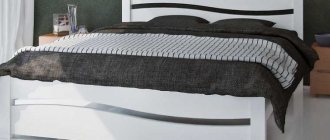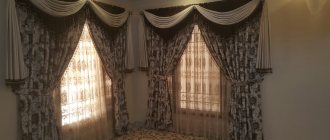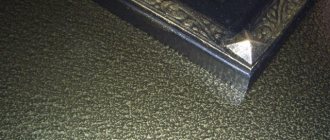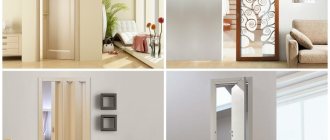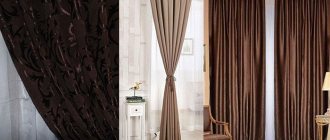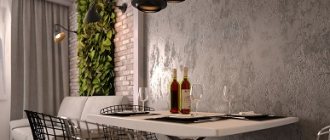Problems with outdoor metal doors
If you install a strong, reliable, and durable, but ordinary steel door at the entrance to your house, you can get a number of problems.
- Heat outflow from the room.
- Constant formation of condensation on the inside - up to real drips that form puddles in front of the door.
- Frost formation on the canvas and box.
- Icing of the structure during severe frosts - up to freezing of the sash and freezing of the lock.
Heat loss is due to the high thermal conductivity of the metal; doors “cry” and “freeze” due to high humidity and dew point. In cold seasons, the door leaf and frame cools down to a temperature at which moisture from the air begins to condense on the surface (dew point).
The higher the air humidity, the smaller the temperature difference will provoke condensation. With the onset of frost, condensation turns into ice.
In addition to the fact that a leaking or icy entrance door is problematic in operation, constant humidity provokes depressurization of the circuit, corrosion of the metal base, deformation and a decrease in the service life of the structure.
What is a thermal break at the front door and why is it needed?
Initially, to reduce heat loss, door structures began to be insulated using various thermal insulation materials. Insulated doors reduce heat loss to a minimum, and the dew point shifts into the insulation. But due to the presence of cold bridges at the points of contact between the inner and outer fabric, they cannot completely solve the problem of condensation and freezing. To prevent any contact between external and internal metal elements, doors with a thermal break between the frame and the leaf were developed. The thermal break prevents freezing parts from coming into contact with warm parts, that is, it prevents condensation from falling due to overcooling of the leaf and prevents the door block from freezing.
Based on their design, steel doors with thermal breaks are divided into three main groups.
- Thermal breakdown of the frame and door leaf with a bolted connection.
SergeiStForumHouse Member
The largest group is because the connection method is simple and not particularly technologically advanced. We type “door with a thermal break” into a search engine and see almost the same thing in 97% of cases. And this: there are several types of insulation in the canvas, in the box there is a bunch of foil insulation and cork backing. All this “cabbage” is laid in various variations with fixation on a steel bolt-nut (box) and rivets (sheet). Find me at least one picture where, in addition to describing a bunch of materials for thermal breaking, there is an arrow pointer to steel bolt-nuts. You also won’t find arrows for steel rivets (screws) when describing a sheet with a thermal break...
- Thermal separation of the box and the canvas through a thermal insert.
SergeiSt
The thermal insert is a part, not a substance. The thermal break is made without the use of metal fasteners, since the insert is the fastener. The door uses one type of insulation. The procedure for assembling the door is such that the structure is first assembled to size, and only then insulation is poured in, which, when hardened, gives the required rigidity...
- Thermal break through micro-cuts in the box and canvas.
SergeiSt
The thermal break is made by laser cutting. When making blanks for the box and the canvas, cuts are made in the metal with a minimum gap from each other. Thus, the manufacturer reduces the cross-sectional area of the cold bridges. I have doubts about the effectiveness of this method, which is confirmed by oral reviews.
As practice shows, a single-layer, but effective heat insulator in a door design with a thermal break is sufficient.
Dmitr88FORUMHOUSE Member
For a door not to the front door, but to the street, polyurethane foam (PPU) is better; there will be much less condensation inside the leaf because there are no stiffeners, which are good bridges of cold. The most ideal option for the street is a door with polyurethane foam and a thermal break between the frame and the leaf.
To prevent condensation from forming on the door, it is important not only to have a thermal break, but also to maintain a temperature and humidity regime in which the temperature difference is less than that required for dew to form.
What to look for when choosing a door with a thermal break
SergeiSt
Most people find it very difficult to figure out what kind of warm door to install in their house. And if the conversation turns to thermal breaks, this makes the choice even more complicated...
There are several fundamental parameters.
Guardian company specialist
The most important thing when choosing a door to the street-warm room border is the manufacturer’s guarantees and compliance with operating conditions. Guarantees should not be based on advertising slogans, but on real tests. You have the right to request a test report, which specifies the heat transfer resistance indicators. You must be familiarized with the operating conditions at the stage of signing the contract, and also be issued a passport for the product, in which all this must also be present.
Well, also pay attention to the design of the door. The thermal break is created in order to eliminate cold bridges. And if the door structure is assembled using screws, then are there no cold bridges in this case? Isn't metal the best conductor? Place any number of gaskets between the nut and the screw, but the contact of one metal with another cannot be avoided, and it is at this point that the cold will spread. When closing non-standard openings, not only the door, but also the shelf and the transom must be made with a thermal break.
The desired thickness of a door block with a thermal break depends on climatic conditions - the colder the region, the higher the heat transfer resistance should be, respectively, the thicker the door and the more technologically advanced its design.
There is an opinion that thermal break is just another advertising ploy, and condensation is “treated” with a wooden door.
IlyaisFORUMHOUSE Member
Tell me, does thermal break actually have any real effect or is it a marketing ploy? I am insulating the house, we are starting to travel periodically in the winter, there is a question of replacing a simple metal door with padding polyester insulation with a normal one, first of all I am interested in the issue of heat. There is no vestibule, a huge canopy (terrace). For now, the weight of the doors with a thermal break is confusing: the house is 10 years old, but it breathes, the log house moves with time, and the front door is even more so in a frame veranda. I'm afraid it won't bear 100 kg and there will be deformation. I think I might just give up and install a second wooden door, but I don’t want to waste the free space.
Company specialist
It was our company that brought the concept of “thermal break” to the door market. For us, this is not an advertising gimmick, but a technical solution, confirmed by tests in a specialized accredited laboratory.
Regarding the wooden door - a high-quality door made of solid wood, of sufficient thickness for an entrance door, also has a high weight. At the same time, it has a huge disadvantage - when temperature changes, the tree expands/contracts and it either does not close, or, on the contrary, leaves large gaps through which the cold passes.
How to choose?
An outdoor entrance door with a thermal break is a more complex design than a conventional metal or wooden one. First of all, choose not a door, but a reliable manufacturer with an established reputation.
The control parameters of metal doors are specified in GOST 31173-2003 “Steel door blocks”. The optimal thickness of the fabric and the type of insulation depend on the expected temperature difference between inside and outside. You should pay attention to the recommended operating temperature, the class of locks, the quality of door hardware and anti-corrosion metal treatment, and the resistance of the decorative coating to UV radiation.
It is better to choose samples with three hinges on support bearings. Such models have a smooth and easy move, less abrasion of the hinges, and uniform load distribution.
Outdoor entrance doors with a thermal break are selected taking into account the design of the entire building and the purpose of the room. For example, solid oak with forged elements looks good against the backdrop of a Russian-style cottage, and retro panels will fit well into the interior of a country house. For installation in organizations and enterprises, it is advisable to choose options with glass.
Features of installing doors with thermal break
Doors with a thermal break are designed for installation at the border of a warm contour and the street and, if necessary, allow you to do without installing a cold vestibule in the house. If this unheated buffer zone is planned, the installation remains along the heat-cold contour, but is shifted inward.
aurelianosFORUMHOUSE Member
Hello! It is possible to make a vestibule. For this purpose, does one of the doors (for example, an external one) need to have a thermal break, or are two ordinary doors enough? Or is it better to install one good door with a thermal break? I'm asking for advice.
Company specialist
To prevent condensation from forming on the door, two conditions must be met:
- no temperature difference between the outside and inside of the door;
- indoor humidity is not higher than 60%.
Accordingly, you can make a vestibule, but then there are two options for installing doors.
- Heated vestibule: street – entrance door with thermal break – warm vestibule – second door without thermal break – living space.
- Unheated vestibule: street - entrance door without thermal break - cold vestibule - second door with thermal break - living space.
The installation technology also depends on the design of the house.
Company specialist
In wooden houses and houses subject to shrinkage, it is recommended to install doors using an adjustable frame. This base (it consists of several elements) is assembled and inserted inside the opening, and the door is inserted into it. The casing for the front door in a wooden house plays an important role. It prevents the risk of deformation after installing the front door due to drying and sagging of the logs.
To prevent condensation, it is important to maintain acceptable humidity, but much depends on the installation.
Company specialist
When installing doors with a thermal break, consider the following recommendations:
- In a homogeneous opening (made of concrete, brick and other materials), street entrance doors with a thermal break are installed at a distance of up to 2/3 of the thickness from the inner surface of the wall.
- If the wall opening has insulation, then metal doors with a thermal break are placed behind the insulation (in the warm part of the wall).
- The doorway should be insulated. Thermal insulation from the air space of the room is required for metal structures with high thermal conductivity. Otherwise, moisture will condense on the inside of the entrance doors to a house with a thermal break.
Design and components
In the last century, the air between the two entrance panels acted as a thermal insulator. But air is a very good conductor of heat, so it quickly left the room with the onset of the cold season. With the advent of new technologies, synthetic substances, which are much weaker in terms of thermal conductivity, began to be used as insulating materials.
When choosing metal products, special attention should be paid to the quality of the metal if the structure will be used for a long time. A good choice is steel with a thickness of at least 3 mm. Additional strength is provided by reinforcing the fabric with fibrous materials, such as Kevlar. This model is difficult to hack or penetrate from the outside. Before purchasing, you should check whether the steel panel has been treated with an anti-corrosion substance, since in the absence of artificial ventilation in the house, condensation over time can cause the formation of rust and the structure will have to be changed.
The strength of door hinges is of great importance, since the weight of a metal structure with a thermal break is much greater than that of conventional armored or wooden ones. The durability of the product will depend on the quality of the metal from which the hinges are made and the method of their fastening. Now many manufacturers are abandoning hinged hinges, preferring the lever system.
The constituent elements of the door structure should include interior decoration and special paint that coats the metal surface. In middle-class models, MDF board, natural wood, and laminate are used as finishing materials. Cheap ones use thick plywood or pieces of wood. Expensive products use a single layer of wood.
Coating materials are acrylic compounds that do not emit harmful substances into the environment, and also provide good adhesion to steel, forming a dense film. When purchasing, you need to inspect the entire surface to avoid scratches or chips.
How is thermal insulation achieved?
The insulation inside the door with a thermal break is laid in 5 layers under the metal panel and in 3 layers along the contour. This “sandwich” is covered with a layer of foil-isolon, which prevents heat from escaping and cold from entering from the outside. The foil is also laid around the perimeter of the door frame - in the frame. Additional double rubber seals are also placed in a circle, reducing heat loss at the joints.
The total width of the panel, based on the standards, must be at least 86 mm. On the market of cheap models there are doors whose thickness is 50 mm or less. The thermal insulation performance of such products will be much lower, since they do not contain fillers that reduce the speed of heat movement through the panel. Others have their thickness reduced to reduce production costs.
Conclusion
A complete thermal break of entrance doors is not the number of layers and combinations of thermal insulation materials in the leaf, but the absence of contact between the internal and external metal parts of the door block. A door with a thermal break will reliably retain heat in the house and eliminate problems such as condensation and freezing.
The problem of condensation and freezing of entrance doors is also discussed in the relevant thread on the forum. A door with a thermal break is the best option for an insulated terrace. In the video - Barnhouse during the holidays.
Subscribe to our Telegram channelExclusive posts every week
Characteristics
In addition to design differences, doors with a thermal break have other characteristics that do not affect heat retention, but are also very important..
Thermal insulation materials
The following materials are used as insulators:
- foil or regular isolon, penofol, isofol, other analogues;
- extruded polystyrene foam;
- Styrofoam;
- mineral wool;
- MDF panels;
- cork backing;
- ship plywood;
- rubber;
- composite materials.
Dimensions
Single-leaf doors are installed in standard doorways with a width of 900 or 1020 mm and a height of 2070 mm with a tolerance of ±10 mm. For installation in wider openings, double-leaf models are available, consisting of a main and an additional leaf. Samples with two doors are made to order. In openings of great height or in the shape of an arch, it is convenient to install thermal doors with a transom located on top.
Color and design
The cheapest and easiest option is to paint the metal with plain or hammer enamel; powder coating is slightly more expensive. Varnished blacksmith paint with a patina looks noble.
Since the design of an outdoor door with a thermal break consists of two parts, they can be painted in colors that are in harmony with the facade and interior. The dark tones of the frame or the entire door leaf look inappropriate against the background of a light hallway or facade.
Another inexpensive option is finishing with MDF paneling. The top of the panel is covered with veneer, painted or laminated with decorative PVC film. In addition to decorative finishing, MDF panels serve as additional heat and sound insulation protection.
Options for finishing with MDF panels:
- Retro style panels. They are combined with a certain style of the building and are ideal for houses made of stone or wood.
- Panels painted according to the RAL palette. The color range offers options for every taste. Recently they have been very popular.
- Panels covered with PVC film. Among film coatings, the wear-resistant products of the Israeli production “Vinorit” are especially well known. Any design can be applied to the film. The most popular samples imitate valuable wood species, natural stone, leather, and marble chips.
- Panels covered with anti-vandal plastic. A good solution for those who have pets. The coating material is as hard and durable as stone and is not susceptible to claws or mechanical damage.
Paneled solid oak is considered a rather expensive finishing method. Its advantages include the possibility of restoration. The design of doors with a thermal break for a private country house often uses forged elements, giving the building a strict ceremonial style.
A door with glass at the entrance makes the room brighter and more open, allowing for a view of the street. The glass insert is placed both in the canvas itself and in the transom above the door. In such models, a double-glazed window with a thermal bridge is used. Stained glass or forging works well with glass.
Placed on the side of the room, the mirror overlay visually expands the space. The mirror allows you to examine yourself before leaving. To give the room a noble appearance, the inside is sometimes trimmed with leather.
